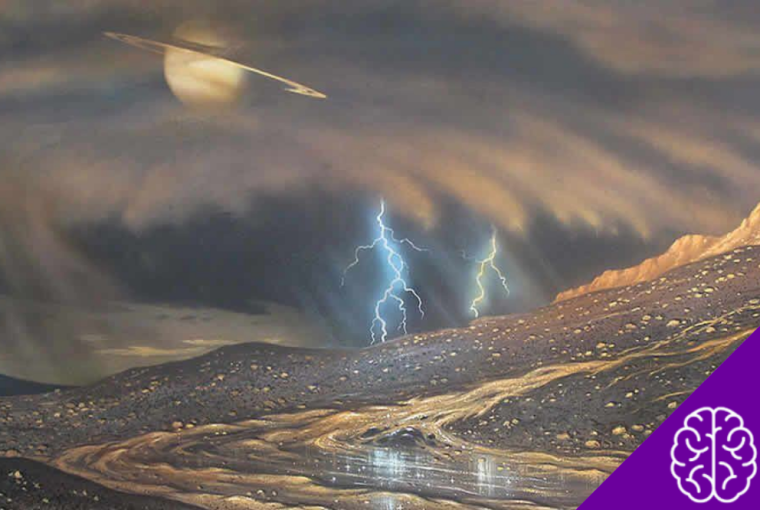Have you ever wondered what rain would feel like outside of Earth? While here we cherish the soothing pitter-patter of water droplets falling from our skies, on other planets, rain can be something entirely different—sometimes fascinating, sometimes terrifying. From molten metal showers on distant exoplanets to icy “rain” made of methane on Titan, what falls from the skies across the universe is a blend of wonder and science.
This blog, Insight Factory, will take you on a tour of some of the most mesmerizing and bizarre types of rain found on other celestial bodies in our galaxy. You’ll learn what causes these alien downpours and why they’re so different from Earth’s rain.
How Does Rain Happen?
Before we step off-world, let’s refresh how rain works here. Rain, as we know it, is part of the hydrologic cycle. Water evaporates from Earth’s surface due to heat from the Sun, forms clouds as water vapor condenses, and eventually falls as precipitation when droplets grow heavy enough.
On other planets, the basic principle of rain—condensation and precipitation—remains the same, but the substances and conditions differ wildly due to variations in atmospheric composition, temperatures, and pressures.
The Infernos of Venus: Sulfuric Acid Showers
- What’s Falling? Sulfuric acid droplets.
- Temperature: ~900°F (475°C)
- Atmosphere: Mostly carbon dioxide with clouds of sulfuric acid.
Venus, our neighboring planet, has one of the harshest environments imaginable. Its thick atmosphere traps heat through a runaway greenhouse effect, making it hotter than Mercury, despite being farther from the Sun.
Here, clouds of sulfuric acid form and release corrosive rain. However, this “rain” never hits the ground! Due to Venus’s extreme heat, the sulfuric acid droplets evaporate before reaching the surface in a process known as “virga.”
Titan’s Methane Rains
- What’s Falling? Liquid methane (and ethane).
- Temperature: ~-290°F (-179°C)
- Atmosphere: Nitrogen-rich, with methane clouds.
Saturn’s largest moon, Titan, is home to an Earth-like hydrological cycle—but instead of water, its lakes, rivers, and rain are made of liquid methane and ethane.
On Titan, methane rain falls slowly due to the moon’s weak gravity and thick atmosphere. Its frigid temperatures enable methane, a gas on Earth, to exist in liquid form. Imagine standing in a cold drizzle made of fuel!
This extraterrestrial rain shapes Titan’s surface, creating rivers and lakes eerily similar to those here at home. This is why Titan often fascinates astrobiologists searching for life in unusual environments.
The Diamond Rains of Jupiter and Saturn
- What’s Falling? Diamonds—yes, actual diamonds!
- Temperature (core): Tens of thousands of kelvin.
- Atmosphere (outer layers): Hydrogen and helium with traces of methane.
Deep within the atmospheres of gas giants like Jupiter and Saturn, conditions become so extreme that carbon transforms into diamonds. High pressures crush methane, splitting the molecules and forming carbon chains. These chains solidify into graphite and, under further compression, into diamonds.
It doesn’t rain diamonds in the usual sense we think of—chunks of precious stones don’t drop casually from fluffy clouds. Instead, as you’d descend into the planets, you’d encounter layers where diamond crystals likely form before they sink deeper into the crushing interiors, eventually vaporizing.
Exoplanet HD 189733b: Glass Shards in the Wind
- What’s Falling? Molten silicate drops (glass).
- Temperature: ~1,700°F (930°C).
- Atmosphere: Made of silicates, iron, and other materials.
Want to experience one of the universe’s deadliest weather systems? Look no further than HD 189733b, an exoplanet located roughly 64 light-years away in the constellation Vulpecula.
This “hot Jupiter” is a gas giant orbiting dangerously close to its star. The intense heat leads to silicate particles in its atmosphere condensing into tiny molten glass droplets. These droplets rain sideways at speeds of up to 5,400 mph (2 km/s) due to ferocious winds ripping through the atmosphere. Imagine razor-sharp molten glass shards flying faster than the speed of sound—this is one planet best admired from afar!
Neptune and Uranus’ Hypothetical Diamond Drizzles
- What’s Falling? Possibly liquid diamonds or diamond sheets.
- Temperature (core): ~7,000°F (3,870°C)
- Atmosphere (outer layers): Hydrogen, helium, methane.
Much like Jupiter and Saturn, the ice giants Neptune and Uranus might also be harboring diamond precipitation in their depths. But unlike their gas giant relatives, these planets are smaller and colder, resulting in fascinating interactions between methane and extreme pressures.
Recent laboratory experiments simulating Neptune-like conditions suggest that diamonds may rain within the atmospheres. These could exist as liquid “diamond oceans” or possibly even fall to the planet’s inner cores.
WASP-76b’s Molten Iron Rains
- What’s Falling? Molten iron.
- Temperature (day side): ~4,350°F (2,400°C).
- Atmosphere: Vaporized metals and heavy elements.
WASP-76b, a distant exoplanet, takes extreme weather to new levels. This ultra-hot gas giant is tidally locked, meaning one side always faces its star while the other remains in permanent darkness.
On the scorching day side, temperatures are so high that metals like iron vaporize. Strong winds carry these iron vapors to the night side, where temperatures drop significantly. Here, the iron condenses into molten droplets and rains down—creating an otherworldly, deadly storm.
Why Does It Matter?
Learning about rain on other planets may seem like a niche astrological curiosity, but it helps us understand weather systems across varied environments. This knowledge is vital to advancing planetary exploration, studying conditions for potential life, and understanding the broader mechanics of the universe.
From harsh acid rains to diamond storms deep within giants, and sideways molten glass showers—each planet’s rain reveals its unique story, inviting us to decipher its secrets.
Want to Explore More?
Thinking about these extraordinary celestial phenomena stretches the imagination and emphasizes the diversity of planets and their environments. Keep dreaming and stay curious—there’s a lot more to unravel about this universe!


